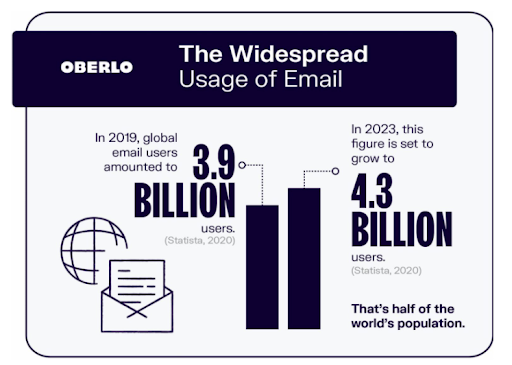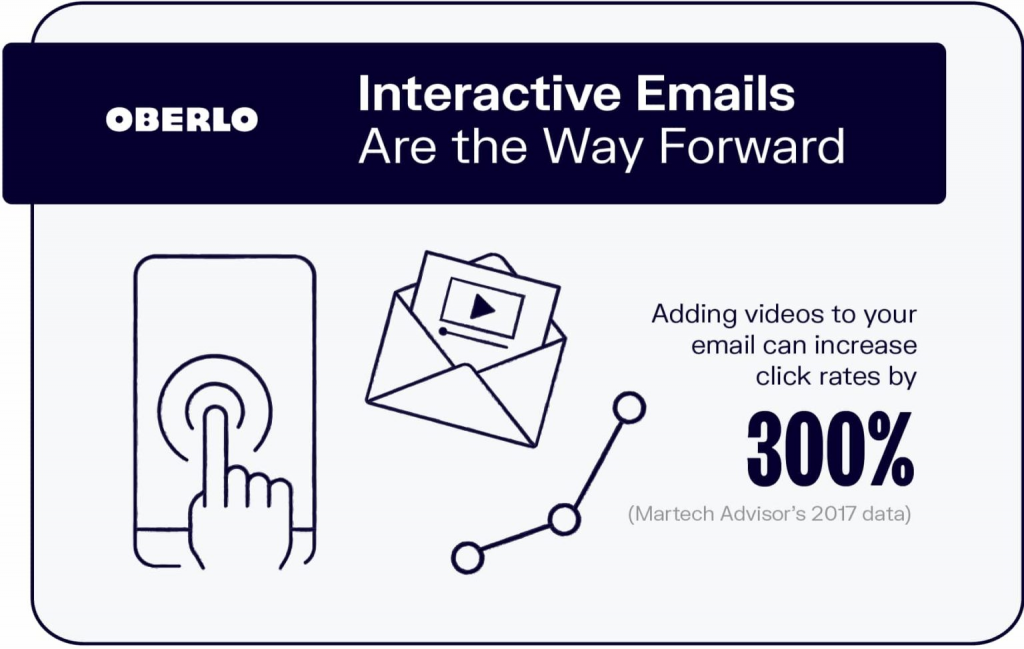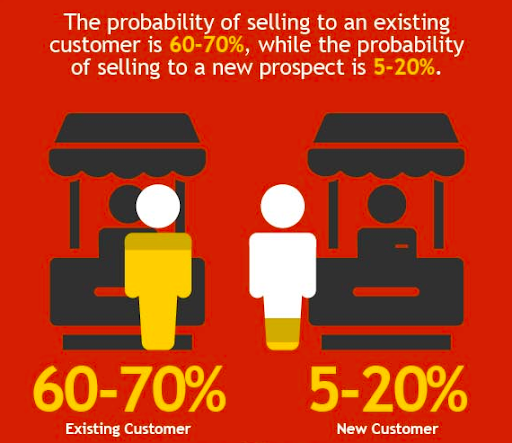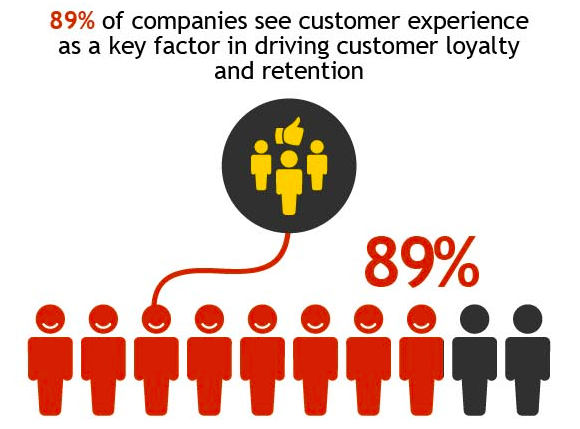Marketing, like many industries, is a constantly evolving beast. There are lots of new, exciting avenues to engage with your customers. Although it’s important to look into all available options, it can get overwhelming. Email marketing has been around for so long that you might think that it’s no longer relevant. However, 73% of millennials prefer communications from businesses to come via email.

Source: TextMarketer
No matter what age group you are targeting, email remains a great way to reach your audience. If you’re doing business, your customers will be using email, and you should be as well.
Building your email list is one thing, but keeping it is another. Have you been noticing people disappearing, and emails going unopened? Well fear not, we will get into the nitty gritty of managing those unsubscribers in this article.
Why is Email Marketing Important?
Email has moved on from being messages between academics to its current global usage. In 2019, global email users amounted to 3.9 billion users. This figure is set to grow to 4.3 billion users in 2023. That’s half of the world’s population. Clearly, email marketing is an opportunity that you shouldn’t be missing out on.
There are many reasons as to why emails are a really important part of your marketing arsenal. One major one is that they work for you when you’re not immediately available. You can set campaigns to run at any time, and you can target which subscribers they’re sent to. This gives the added bonus of personalization, which customers love.
With such widespread popularity, it’s no surprise that the return on investment is massive. A well planned email marketing strategy is a surefire way to make money. For every $1 you spend on email marketing, you can expect an average return of $42. This is obviously a huge benefit for keeping your business growing.

Source: Oberlo
What is Unsubscribe Rate?
The unsubscribe rate measures the percentage of people who opt-out from an email list. You can calculate your unsubscribe rate as follows:
(number of people unsubscribed / emails delivered) x 100 = Unsubscribed rate %
Anything below 0.5% is considered good, while 0.5-1% is regarded as reasonable but could be improved. However, an unsubscribe rate that is less than 1% is considered within the industry standard.
A high unsubscribe rate can indicate various problems. For example, you might be targeting the wrong people, or the quality of your email content might be poor. Perhaps your emails don’t work on mobile devices or you might be sending them at the wrong times.
Luckily, there are many ways you can work to keep your unsubscribe rate lower – and we’ll walk through some of these solutions further down.
Why should you care about retaining subscribers?
You’ve been building your email list of people who are interested in your business. Maybe you’ve done so through signups after people have bought products or services. Or by offering deals or through a pop up on your website. There are lots of avenues to use to build your email list.
Perhaps you’ve noticed some people have unsubscribed and your numbers are going down. It’s a normal thing to happen, but can still be disconcerting when it does.
You may be wondering what the big deal about retaining subscribers is. You can always just get more, right? Well, that is true, but statistics show it might be worth your while trying to keep the ones you’ve already got.

Source: Invesp
First things first. Once you’ve started collecting subscribers, you need to make sure your emails get to them. Get past the spam filters and into the inbox by using a dedicated email campaign software. You can also use it to follow your email performance. Detailed statistics for each campaign help you learn what works and what doesn’t.
Then your next step is to retain those subscribers. Let’s look at some key ways to reduce the unsubscribe rate of email marketing efforts.
Ways to Reduce Unsubscribers
First impressions count
The good news is, the average open rate for a welcome email is 82%. So you have a good chance of your first email being opened. Unfortunately, it only takes one bad initial email to lose a subscriber. Chances are, it’ll leave them feeling annoyed they ever engaged with your business at all.
Make sure to use this high open rate to your advantage when building your email campaign. Onboarding emails get sent straight after a new customer buys a product or signs up for a service. They immediately show a customer that the brand in question appreciates their business.
Onboarding emails can also serve a range of further purposes, such as:
- Welcoming the new customer to the fold
- Offering instruction as to how to use their product or service
- Encouraging further engagement and interaction
- Cross or upselling other offerings
- Answering any and all other questions a new customer may have
Put effort into your onboarding email and make sure you do it right, and you will see fewer unsubscribers.

Source: Socialmediatoday
Create content people want to engage with
It might seem simple, but the best type of marketing is good content! No matter how much you spread a message, if the message itself isn’t worth reading, people won’t bother.
The easiest way to lose a subscriber is by sending a sub-par email, filled with errors. You don’t have long to catch someone’s attention, so make sure it’s snappy and to the point. Brush up on good email etiquette to make sure your emails are top-notch.
Good content also applies to writing good subject lines. The body of an email is always the most important element to focus on. But the first thing that will engage your audience is the subject line. Using a striking email headline is always one of the best ways to achieve a high open rate.
These days, people use inbox triaging on their emails. They quickly scan their inboxes and manage it immediately. They decide what emails they’re going to read right away, save for later, or delete and ignore. So make sure yours makes the cut!
You could even go one step further and use your emails to create active user engagement. Gone are the days where your email marketing campaign needs to be limited to a newsletter format. There are so many more options now. Interactive content can result in increased engagement.

Source: Oberlo
Mobile video consumption goes up 100% every year. Using video in emails can help companies expand their customer connection and retention. In fact, even just using the word ‘video’ in your email subject lines has been found to increase open rates by 19%. Not only that, using video in emails can reduce unsubscribes by 26%.
People often pay more attention to videos than they do to a big wall of text. Video marketing is often used to boost SEO rankings and build brand awareness, so why not integrate it into your email strategy too.
Video is a great tactic to use in email marketing. It draws your subscribers in, and it can also be a great customer experience tool. It’s an easy way to explain your product or service in a fun and catchy way. It’s an option to offer customers a solution to a relatable pain point. You can even send how-to videos to help customers use your product. That way, you can help them out even before they need to ask. They will be grateful for it.
Optimize for mobile
Today, 61.9% of all emails are opened and read on mobile devices. And these numbers have only been rising over the years. Using a mobile-responsive email design can increase unique mobile clicks by 30%. But not all businesses are prioritizing this yet.

Source: emailmonday
Mobile users want the text to be short, sweet, and to the point. Have a great opening line and get to the point right away. Keep your call to action and all the important text in the top part of the mobile phone screen. It needs to be there for easy consumption without readers having to scroll. Make it easy for them to do what you want them to do.
Make any icons and call to action buttons touch-friendly. They need to be the right size for a finger, as opposed to the traditional cursor. No one will bother with your buttons if they have to zoom in to click them. Equally, no one wants to accidentally click when they’re trying to read something! Keep in mind that the standard minimum for touch-friendly buttons is 44×44 pixels.
Make sure you have sufficiently large fonts and you shrink your images. Again, you want your users to be able to read your emails without having to zoom in or out. Your images should also be data-effective for your subscribers. Most users are likely to be checking their emails on the go so you want to be mindful of their data plans.

Source: emailmonday
Personalize everything
In 2019, 80% of marketers noticed that there was an increase in open rates on emails which were more personalized. And subject lines are a great way to do that so make them count.
Personalizing email subject lines can increase open rates by 50%. The most commonly used personal data in email subject lines is recipient names, leading to a 21.2% open rate. Try to customize your email greeting and subject line to include individual names. Just avoid going too far – we’re all familiar with the ‘unique offer 4 u, jane!! click now!’ spam emails, after all.
Some other ways you can personalize email subject lines are:
- Include their birthday.
- Mention their interests.
- Show their transaction history.
- Bring up their browsing history.
- Use their relationship status.
Another good personalization tactic is to send your customers an abandoned cart email. Remind your customers if they have left your website with items still in their cart. You can send a considerate email to help them pick up from where they left off.
There are also lots of segmentation examples you can use to divide your market into groups. Identify different groups so you can deliver more targeted and valuable messaging. You don’t want to be advertising an IVR system to a company that doesn’t have a call center, for example.

Source: Invesp
Allow easy follow up and contact.
If your email subscribers like what you have to offer and want to engage, you need to make it easy for them. If you’re getting lots of responses from your great email marketing campaigns, that’s great! But you need to make sure you have a good contact center to support your customers.
Use skills-based routing to route high-value customers to highly skilled contact center agents. It matches customer to agent, depending on the kind of service the customer requested. This means enhanced customer experiences, reduced wait times and training costs, and more.
There are also some ways to take your email marketing campaigns further. Rather than waiting to be contacted, make use of follow ups. That way you can make sure your subscribers feel like they’re being taken care of and are more likely to stay. Great service will result in loyal followers.

Source: Invesp
Don’t worry
Don’t give yourself too hard a time if you’re losing email subscribers. You’re always bound to lose some, and it’s not necessarily your fault. But try some of these tips to give yourself the best chance of keeping your email list as full as possible.
Make sure you also have a sales territory plan so that you can make the most of your email subscribers. It will help you to focus on meeting specific customer needs and targeting prospects that are most likely to buy. Segment sales opportunities by industry, opportunity, role, business size, or business type. This allows you to focus your efforts rather than just guessing and trying to cover ground with no focus.
Then concentrate on giving your subscribers the best content you can. Send them engaging emails and work towards solving their pain points. Make sure you’re putting your email list to good use and leverage it effectively!











